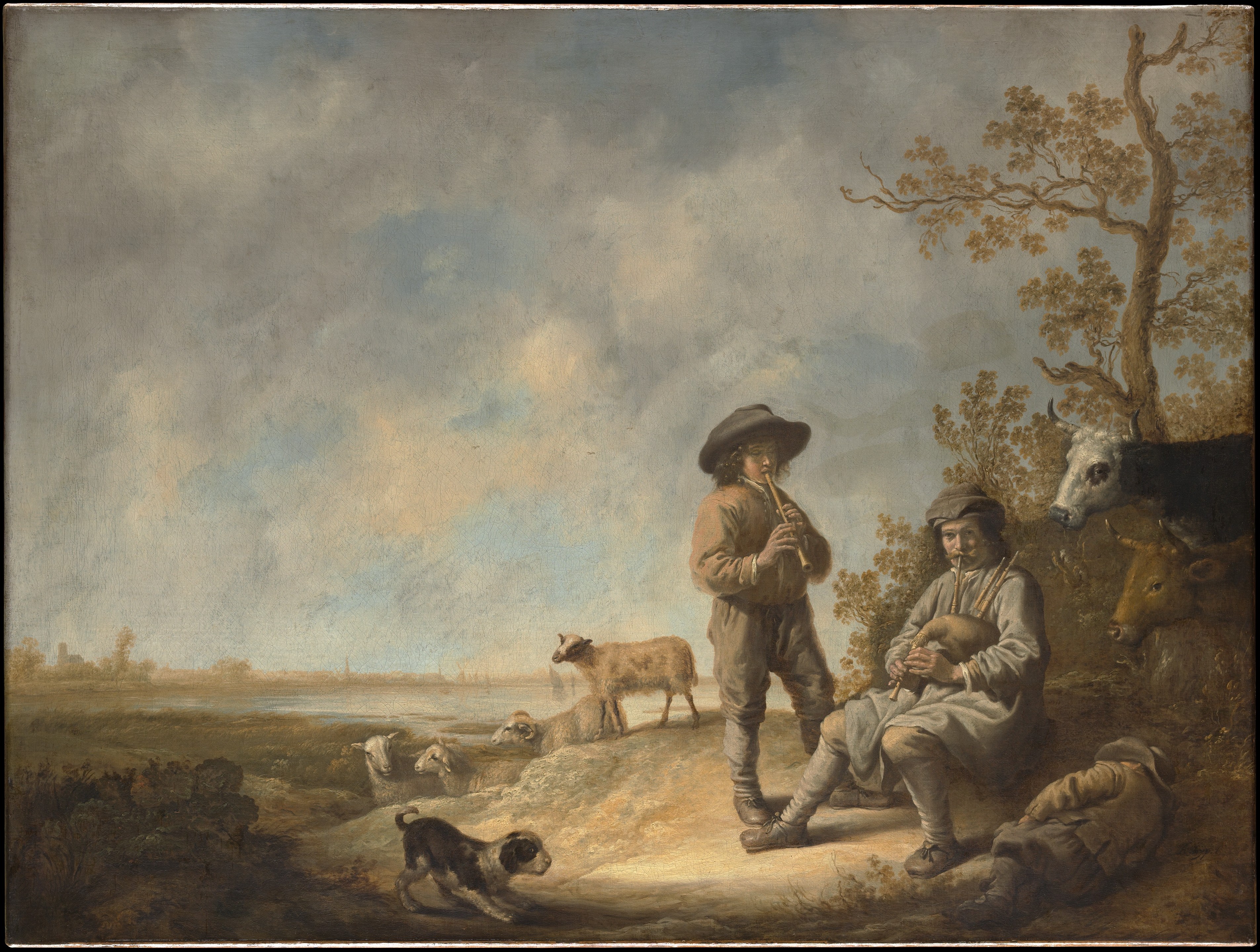 |
| Piping Shepherds |
Artist:Aelbert Cuyp (Dutch, Dordrecht 1620–1691 Dordrecht)
Date:ca. 1643–44
Medium:Oil on canvas
Dimensions:35 3/4 x 47 in. (90.8 x 119.4 cm)
Classification:Paintings
Credit Line:Bequest of Collis P. Huntington, 1900
This early picture by Cuyp dates from about 1643–44. The figures resemble those painted by the artist's father, Jacob Gerritsz. Cuyp, but the canvas is not one of their collaborative efforts. Many Dutch artists painted idyllic views of the Dutch countryside, but this one is distinguished by its charming naïveté: the pipers play, the animals assemble, and the dog seems to know it is time to go home.
Catalogue Entry
This is a signed early work by Cuyp, probably painted about 1643–44. Although larger than most works painted by the artist when he was in his early to mid-twenties, the painting shares with them a fluid touch and a palette reminiscent of Jan van Goyen; pale browns and yellows blend together in the landscape, tans and grays in the costumes, and blues in the sky. The color of the light and the fall of the shadows suggest that the time is late afternoon, which is consistent with the alignment of Dordrecht Cathedral on the horizon to the far left. A mood of quiet contentment prevails: the boy plays a flute, the man a bagpipe, and a younger boy lies on the ground, while attentive cows and smiling sheep seem to assemble for the music or for the walk back home. The playful dog, by contrast, appears to eye the viewer.
Reiss (1952) seems somewhat uncertain of the attribution, and implies that the figures and animals may be by Aelbert's father, Jacob Gerritsz Cuyp (1594–1651/52). The question is raised by the general resemblance of the figures to types painted by the elder Cuyp, and by known examples of collaboration between father and son in the early 1640s. The execution, however, reveals no indications of more than one hand, and is entirely consistent with Aelbert's undisputed works of the early 1640s, such as Sunset near Dordrecht (Museum Boijmans Van Beuningen, Rotterdam) and Orpheus Charming the Animals (private collection, Boston).
As several authors have noted (see Refs.), the landscape in the left background, with its distant view of Dordrecht Cathedral (the Grote Kerk), corresponds with a drawing, Dordrecht from the East (Rijksprentenkabinet, Rijksmuseum, Amsterdam), made from nature by Cuyp about 1641–43. Cuyp used the same study for the backgrounds of The Kicking Horse (Philadelphia Museum of Art) and Landscape near Dordrecht with Shepherds Teasing a Goat (private collection, The Netherlands). The latter is also similar to The Met's picture in its grouping of trees and animals at the right, and in the scale of the shepherds (who differ, but wear the same hats).
The boy lying on the ground is an early instance of a common motif in Cuyp's work. The sheep probably derive from examples by his father. The entrance of cows and other animals from offstage is a common occurrence in the elder Cuyp's oeuvre, where a model for the dog is also found. To judge from their facial types, the musical shepherds may also have immediate antecedents in the work of Cuyp's father, but none is presently known.
A copy of two-thirds of the composition, cropping the left side and replacing the dog with a copper jug, was on the art market in 1990.
[2016; adapted from Liedtke 2007]
Copyright Image
https://images.metmuseum.org
Comments
Post a Comment